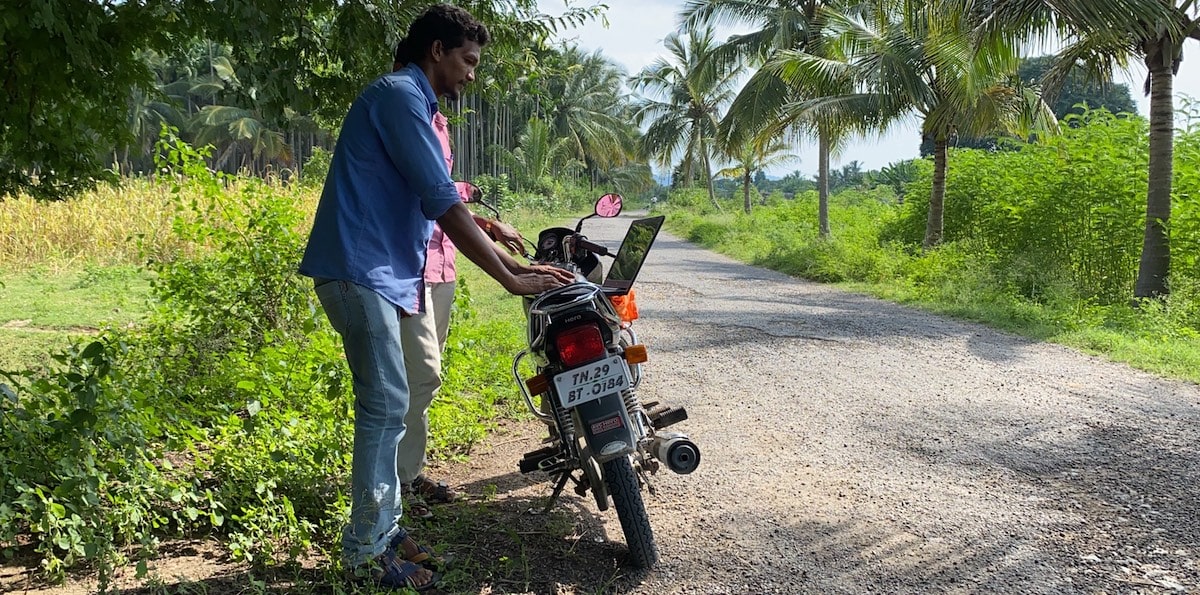At the Internet Society we work towards developing the Internet to be open, globally connected, secure, and trustworthy. A big part of this work is growing the Internet to those who need it the most, bridging the digital divide.
But what exactly is this digital divide? At first glance it seems as though there may be a simple answer: “the gap between those who have and do not have access to computers and the Internet”. But upon further investigation, there are many ways to measure the divide. In fact, there are multiple divides.
Below you will find a brief overview of some of the ways that the digital divides are discussed and calculated. Despite there being no single definition, there are effective ways to connect those left behind and to address the divide. One solution is building community networks and fostering the conditions for them to thrive.
What Is the Digital Divide?
There is no one digital divide. At a high level, the digital divide is the gap between those with Internet access and those without it. But the digital divide is multifaceted and includes many factors such as access, affordability, quality, and relevance. As Michael Kende wrote, “the digital divide is not a binary.” Here are some of the things that lead to disparities in Internet access:
- Availability: Is there available access to the Internet in your area? Is there a nearby point of connection to the Internet? If yes, this is just the first step to having Internet access.
- Affordability: Is that access affordable? How does the cost compare to other essential goods? What percentage of your income do you need to pay for access?
- Quality of service: Are the upload and download speeds sufficient for the local needs of Internet users?
- Relevance: Does the connected community have the necessary skills and technologies? Is there local interest and understanding of the relevance of Internet access? Are there locally available mobile apps? Is there content in the local language and relevant to the people in the community?
- Additional divides: Other areas that can create digital inequality include security, interconnectivity, digital literacy, and access to equipment.
These gaps in availability, affordability, interest, and digital literacy exist at the international level as well as the neighborhood level.
Countries that have high overall connectivity rates often still have stark inequalities in rural, remote, and even urban areas. Often these gaps fall along other disparities such as income and gender-based inequality. For instance, the United States has high overall connectivity rates, but there is a marked gap in availability of affordable and sustainable Internet access on Indigenous lands.
The Latest Data on Digital Divide
There are many approaches to calculating the gaps in Internet access. Each source uses its own methodology with different scope and metrics. Some sources look at the saturation of devices used (such as computers or smartphones) while others look at the areas covered by Internet Service Providers (ISPs).
Every methodology has its limitations and there is no way for data to capture all the marvelous complexities of how people use the Internet. Despite these potential limitations, some sources provide a good idea of what the digital divide looks like in numbers.
The UN’s Broadband Commission for Sustainable Development estimates that nearly 3.6 billion people remain totally unconnected to the Internet by any measure. This means there are around 4.1 billion people online, about 53.6% of the global population.


Source: https://public.tableau.com/profile/ituint#!/vizhome/ITUFactsandFigures2020/ITU2020
The Digital Divide Exacerbates Other Divides
Perhaps more pressing than how to measure the digital divide are the many ways that lack of access can deepen other divides and inequalities. People without connectivity are often those with lower incomes. This lack of Internet access creates further barriers to economic opportunities and mobility. The digital divide is fueled by and contributes to many other socioeconomic inequalities.
The divide is not a single divide or clear cut, but no matter how you cut it, digital exclusion has many adverse impacts. Here are a few:
- Access to healthcare and its outcomes: Internet access is an important public health issue. Lack of access means exclusion from vital health information and resources. Health experts now insist that broadband Internet access “must be recognized as a social determinant of health.“
- Economic opportunities: For both workers and business owners, lack of quality broadband means decreased economic opportunities and competitiveness in the digital economy.
- Educational opportunities: Lack of Internet access for school-aged children means that they are denied the educational benefits of the Internet. This gap perpetuates unequal learning outcomes and has been particularly difficult during the COVID-19 pandemic.
These and many more inequalities are perpetuated by the digital divide. This makes bridging the gap all the more urgent.
Community Networks Are One Complementary Solution for Bridging the Digital Divide
Just as the digital divide itself is not binary, there is no single solution to bridging it. For decades governments and private industry using traditional models have been successful in bringing Internet access to many.
However, the remaining unconnected half of the world’s population is the hardest to connect to the Internet, often living in low-density or low-income areas that are not as profitable for large businesses to provide service and build infrastructure. This has led to a slower rate of growth of new people connecting to the Internet. Innovative solutions are needed to move forward.
Community networks can meet the challenges of the many digital divides, bringing affordable Internet access to those who need it the most. Beyond making the Internet available and affordable, community networks help address some of the other divides mentioned above.
For instance, bringing Internet access to a community improves health disparities by making affordable telehealth options available to rural areas—this was the outcome of the Internet Society’s Nepal’s initiative Effective Broadband for Health. Other communities have seen changes in different areas at once through connectivity, such as education, healthcare, and agriculture in the case of the Murambinda community network in Zimbabwe.
The community network deployment process also shows that community members who are involved in building their networks also strengthen their shared digital literacy skills.
In Waimanalo, Hawai’i, it opened new opportunities and gave the community the agency over their connectivity. John Garcia, a community member who was key in the deployment of the Waimanalo network, said, “There are a lot of entrepreneurs here who can now connect and work from home. We moved from no connectivity, to being connected, to being able to control that connection and expand it.”

